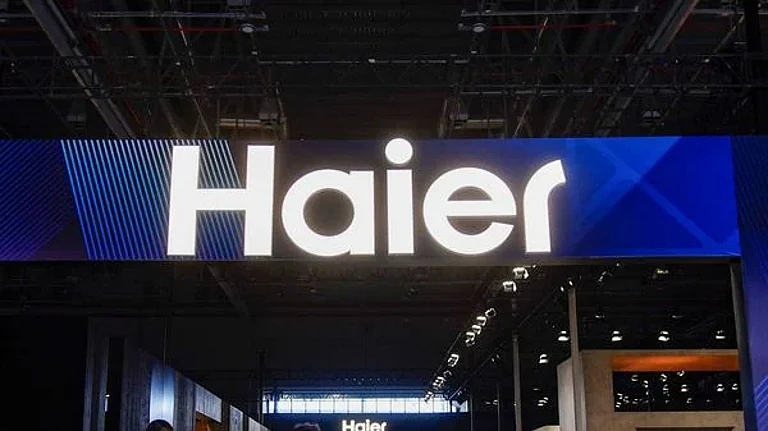If there is one concept that Indians readily buy, it is the ‘value for money’ concept. And while by this standard, budget hotels in India should have really taken off, most of them continue to languish thanks to dismal occupancy rates. According to industry estimates, there are over 1 million rooms in the budget hotels category across the country that struggle to find occupants. Customers looking for accommodation are willing to fork out a little more and stay at larger hotel chains because budget hotels are not unified by any standard norms, rules or service guarantee. While online travel agencies such as MakeMyTrip and Yatra put a bunch of these hotels online for bookings, the issue of standardisation, service and quality of rooms still remained.
In order to solve the problem of standardisation, online hotel aggregators such as OYO Rooms, ZO Rooms, Stayzilla, ZipRooms, Vista Rooms, FabHotels and Wudstay have mushroomed over the past few years. “Before OYO entered this space, there were no minimum standards set for hotel accommodations. Since day one, we have strived to solve problems of not only accessibility and availability, but also standardisation, all with the help of technology,” says Ritesh Agarwal, founder, OYO rooms. OYO has a presence in 140 cities, with its 4,000 hotels partners offering over 40,000 rooms. How does it work? According to OYO, it takes about 48-72 hours to make a room match its standards and about Rs.10,000-Rs.12,000 to rebrand it. It has collaborated with hotels and vendors to standardise rooms across properties by offering a uniform set of features such as Wi-Fi, breakfast, a flat-screen TV, clean linen and branded toiletries. Agarwal says that technology and an ecosystem of vendors will together help standardise the company’s offerings.
Hotel owners are quite happy to get on board given the promise of better reach and occupancy rates. Earlier, unbranded hotels used to get bookings through walk-ins and word of mouth, but now these low-cost hotels have seen a rise in bookings after tying up with these aggregators. Occupancy rates have increased from 20-30% to 60-70% in some cases. In the case of OYO, to ensure that quality is maintained, a company-appointed auditor conducts physical quality checks every three days and updates his or her findings through an app. This is then verified against ratings. Customers, on the other hand, cannot make their next reservation unless they give a feedback rating of their previous stay. Hotels that repeatedly fall below a three-star rating are then taken off the platform. All check-ins and check-outs — as well as the audits — are done through the OYO app loaded on a tablet, which also offers single-click reconciliation on payments and other variables. “Technology is at the centre of this relationship, bringing in operational efficiencies in our daily dealings with our hotel partners and redefining the way a customer interacts with the brand. We strive to control the end-to-end experience of our guests, from booking to check-out,” says Agarwal.
OYO’s competitor (and new acquiree) ZO Rooms also follows a similar drill. “At ZO Rooms, we identify and handpick suitable budget hotels across the country. Once we see potential in a property, we make an effort to scale it up and match it to our standards,” says co-founder Abhishek Bhutra. ZO Rooms has a network of 11,000 rooms in 1,000 hotels spread across more than 50 cities and towns in India. Hotel owners bear the upgradation and standardisation costs and take it as an investment that will be recovered through higher occupancy rates. Online hotel aggregators charge between 15 and 20% as commission from hotels on every booking.
 Book by room
Book by room
Apart from ensuring a quality stay for customers, these players are also working to provide a standardised tariff bracket that is in accordance with the type of room and services being offered. “A few years ago, the price variation was crazy in Bengaluru. But now we have stability in price range, as a lot of supply has been generated, not only by hotels and guest houses, but also by service apartments,” says Yogendra Vasupal, founder of Stayzilla.
While OYO, ZO and others work on an inventory model where they rebrand the properties, Stayzilla strives on a marketplace model, creating more rooms and connecting supply and demand. “The evolution of hotel aggregators has been in three steps. The first step was to discover unbranded hotels, villas and lodges, bring them onto one common platform and market them. The second was to upgrade the services by providing free internet and complimentary breakfast to customers. The final step was to create new rooms, catered to by players like Stayzilla, by following the Airbnb model of letting out spare rooms in service apartments to travellers,” says Tarun Davda, MD, Matrix Partners. Stayzilla has a presence in over 4,500 towns and works with 40,000 budget hotels offering 800,000 rooms across India.
Keeping tariffs low is another way to attract customers. Just like e-commerce players, most of these companies work on pricing and come up with offers that clearly seem unsustainable over the long term. While the average ticket size for these players ranges between Rs.1,500-2,000, the minimum base price starts at Rs.999. There have been discounts like the one by ZO Rooms offering rooms for Rs.99 per night. “This was the first such mega offer in the hospitality space. Initially, this was meant to reward our existing customers and celebrate the festive season with our clients. Within 10 hours of the offer launch, 90% of properties were sold off,” says Paavan Nanda, co-founder, ZO Rooms. While these offers may lure customers to try the budget stay experience once, Indian consumers fail to be loyal. Once the offers vanish, a lot of hotels are likely to find that they are left with fewer customers.
Betting big
Like in the case of e-commerce, helping these companies fight the battle of pricing themselves out of the business are some generous cheques written by venture capitalists. Online hotel aggregators have seen a total investment of around $170 million across five deals. While OYO leads the trail with Japanese telecom and internet major SoftBank Group pumping in $100 million, ZO Rooms managed to snap up $47 million in two rounds of funding from Tiger Global and Orios Venture Partners, among others. Stayzilla, one of the early entrants in the business, raised more than $20 million from Nexus Venture Partners and Matrix Partners. “Aggregators are adding value to the industry. Their revenue model can attract healthy commissions, as it is a high-margin business. If a room is empty, it’s a loss for hotel owners, and when these aggregators assure them bookings with a 15-20% commission, it’s a healthy business for both sides,” points out Davda. But unlike e-commerce firms, online hotel aggregators may not have the luxury of having access to unlimited capital, as follow-on funding is not easy to come by: VCs are cutting back on the cheques they are writing and starting to focus a little more on operating metrics than before. “Investors are keenly looking at all disruptive businesses. While an aggregation of budget stay inventory in a large and rapidly growing economy like ours does make preliminary business sense, the players need to focus on operating profitability if they want to see large follow-on investments,” explains Mandeep Lamba, MD, JLL group, a global real estate services firm. The hotel industry is a tough business to execute even within a single chain. To aggregate hotels across the country and offer a standardised experience is a huge challenge, since many variables are not in the control of these aggregators. In the age of social media, even one bad customer review can be a drawback. While most plan to overcome execution challenges with the help of training and technology, they have increasing competition to contend with, which makes business difficult for them.
New kids on the block
Apart from a few existing hotel owners, who choose to go on their own, online travel agencies such as MakeMyTrip and Yatra have now banned OYO Rooms and ZO Rooms from their portals. What’s more, they are entering the fray with their own such offerings. MakeMyTrip has launched Value+, which offers air conditioning, satellite TV, free breakfast, Wi-Fi and double the money back if customers are dissatisfied. The company has 1,000 hotels under this banner and is looking to increase hotel revenue from 45% to 70% over the next three years. Similarly, wafer-thin margins in airline ticketing have forced other online travel agencies (OTA) such as Goibibo and Yatra to come up with their own versions as well. While Yatra’s TG Rooms and TG Stays has 12,000 rooms, Goibibo’s GoStays has about 11,000 rooms on offer.
But online hotel aggregators aren’t perturbed just yet. While the bigger players admit that this might bring some near-term impact, they believe it won’t affect their business model. “OTAs were a major contributor to the business when we started in January 2015. However, their contribution has fallen to single digits in recent times. We have been able to grow aggressively, as majority of our bookings come directly through our app and website,” says Nanda of ZO Rooms. OYO’s Agarwal believes that the move will limit this selection for OTA customers. “This will not impact our business. OYO has seen strong growth in customers booking via our app, website and reservations helpline,” he says. According to him, 60% of the transactions come exclusively from mobile apps and 20% from websites (mobile and desktop).
Part of the reason this space has caught everyone’s attention is the fact the internet story in India is just exploding, with 19% internet penetration and 39% growth in e-commerce transactions during 2007-2014. And the online travel industry has been the largest contributor to the e-commerce industry. According to a report by Barclays, the online travel market has grown 30% on average, from $1.8 billion in 2007 to $11 billion in 2014. The increasing number of travellers is expected to lead to more demand for hotel rooms. According to ICRA, an estimated 8.4 million Indians will book their hotels online, up from 3.5 million in 2014. As a result, ICRA says, the online hotel industry will increase from $0.8 billion to $1.8 billion in 2016. In India, online hotel bookings account for only 16% of overall bookings, whereas in Europe, almost 70% of the rooms are booked online; in the US, the number is between 35-50%. These numbers are driving much of the optimism around the online hotel aggregation space. But it remains a tough business to execute, given the disparate quality of rooms and the cash burn due to steeply discounted price offers. Firms with investors with the deepest pockets are likely to remain in the game, while others will crash and burn once funding dries up. In the fiercely fought over online hotel aggregation space, much like in the case of e-tailing, the consumers stand to gain the most. But the long-term sustainability of all these players will depend on the financial discipline they manage to exercise. The list of casualties is likely to be long.











